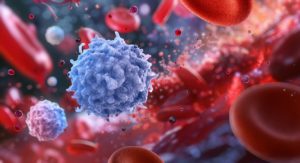Next Generation Sequencing (NGS) is an efficient way to keep track of disease-causing mutations in patients. Relying on this technique, a team of researchers from the Hospital Universitario Central Asturias (Spain) screened 140 heart failure patients who underwent heart transplantation to look for new pathogenic variants in their genomes. Genetic testing is relevant on its own to investigate the implication of given genes in heart failure risk, but also to properly diagnose relatives who might be carrying the same defective allele. This is particularly true for pathologies such as Familial Hypercholesterolemia (FH), an important genetic factor in cardiovascular disease risk.
Cholesterol is a critical lipid in various biochemical processes and its trafficking between the liver and rest of the body is mediated by proteins such as the apolipoprotein B (ApoB) and the LDL receptor (LDLR). ApoB transports lipids like cholesterol from cell to cell and LDLR is a cell-surface receptor involved in cholesterol endocytosis.
Because of their critical involvement in cholesterol processing, mutations and therefore perturbations in the activity of those proteins can lead to dramatic increases in blood cholesterol. This excess cholesterol accumulates in arteries, causing AtheroSclerotic CardioVascular diseases (ASCVD).
For these reasons, persons subject to those mutations are particularly at risk of undergoing vascular complications from an early age. Properly diagnosing Familial Hypercholesterolemia can thus alleviate the daily life of mutation carriers and avoid having to resort to ressources-intensive and complications-prone surgery like heart transplant. Also, immunosuppressant drugs used to avoid graft rejection can interfere with existing treatments such as statin drugs.
The researchers classified suspect genetic mutations as pathogenic/likely pathogenic (P/LP) or as Variants of Uncertain Significance (VUS) on the strength of a detailed posteriori analysis of the transplanted carriers medical records. The analysis enabled to discover four missense mutations related to HF (one amino acid is replaced by another in the protein sequence). 3 of them were classified as VUS and a previously reported one as pathogenic.
From a methodological perspective however, variant classification remains open to discussion due to the difficulty of identifying the biological effects of a specific point mutation. Moreover environmental factors such as lifestyle and comorbidities (smoking, hypertension, diabetes, familial background) also play a role in FH development. Finally, medical records can be incomplete or inaccessible, making it all the more difficult to draw a comprehensive picture of a patient’s cardiovascular background.
Despite these difficulties, the paper demonstrates the relevance of opportunistic FH screening in heart transplantation recipients. Paradoxically, focusing sequencing efforts on already identified patients can help improperly or undiagnosed patients. Indeed, those screens allow to widen our knowledge on the genetic root causes of HF and help physicians identify the disease properly.
To this end, and as recommended in the publication, our Familial Hypercholesterolemia NGS panel screens for LDLR, APOB and PCSK9 (an antagonist enzyme of LDLR), as well as 6 other genes involved in FH. In this way, the kit ensures reliable and comprehensive diagnosis of the pathology to progress towards better care and guidance for patients and their relatives.
Salgado M, Díaz-Molina B, Cuesta-Llavona E, Aparicio A, Fernández M, Alonso V, Avanzas P, Pascual I, Neuhalfen D, Coto E, Gómez J, Lorca R. Opportunistic Genetic Screening for Familial Hypercholesterolemia in Heart Transplant Patients. Journal of Clinical Medicine. 2023; 12(3):1233.





